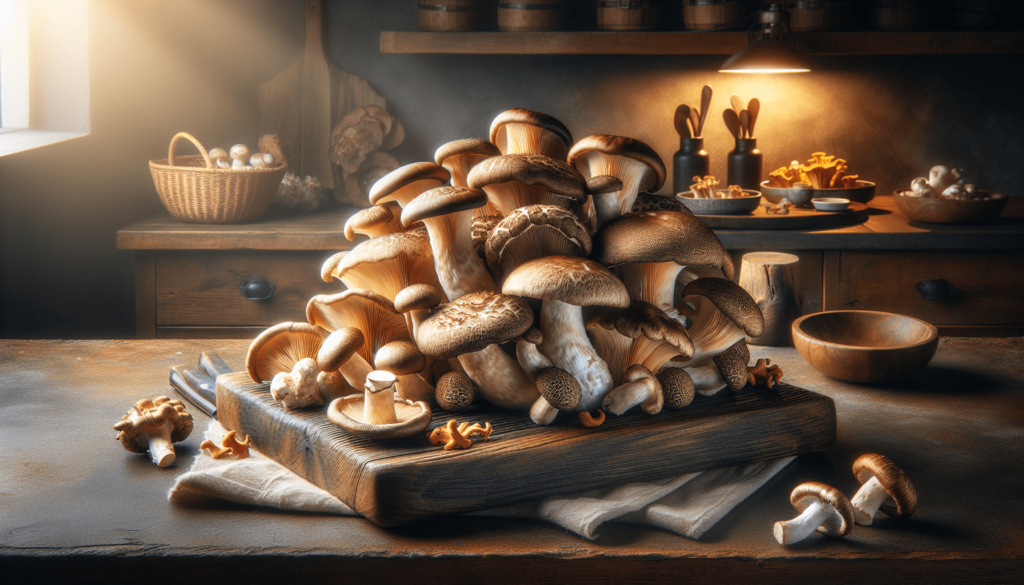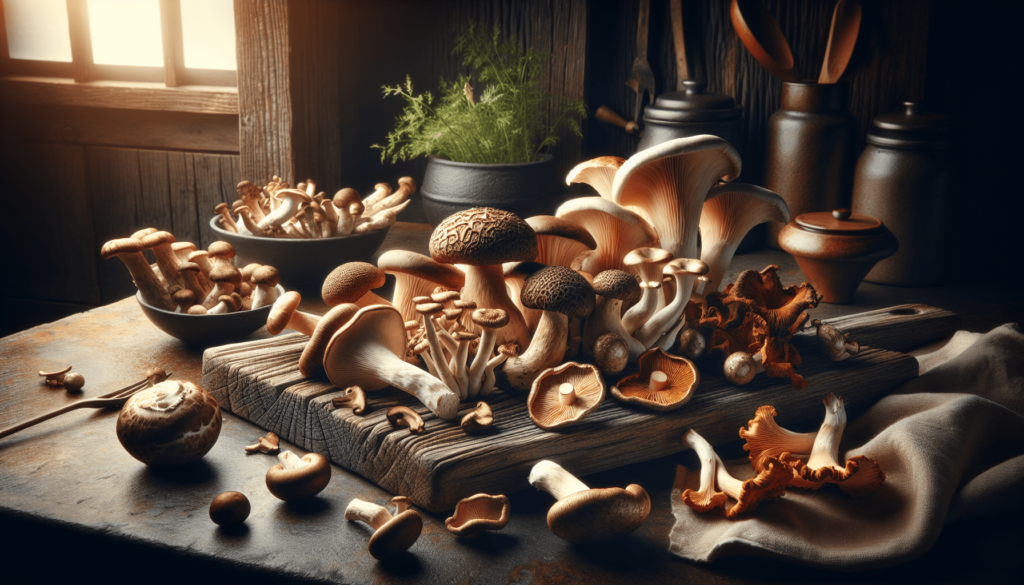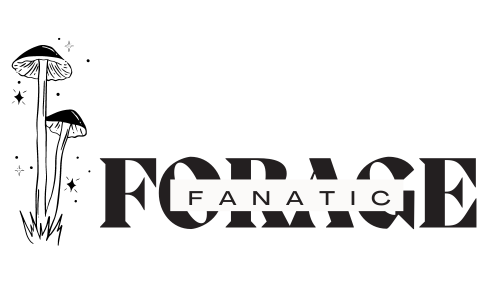Welcome to “Gourmet Mushrooms At Home: Elevating Everyday Meals”! With a blend of informative insights and practical tips, you’ll uncover the rich world of mushrooms and learn how to seamlessly integrate them into your culinary repertoire. The content dives deep into the nuances of various mushroom species, their flavors, textures, and health benefits while providing step-by-step cooking techniques and inventive recipes. Whether you’re a novice or a seasoned chef, this guide will inspire you to explore mushrooms’ versatility, from mouth-watering risottos to unique smoothies and eco-friendly foraging. Get ready to transform your everyday meals into gourmet experiences with the magic of mushrooms! Have you ever wondered how to elevate your everyday meals with a touch of gourmet finesse? By incorporating gourmet mushrooms into your dishes, you can transform ordinary recipes into extraordinary culinary experiences. Whether you’re a novice cook or a seasoned chef, the world of mushrooms offers endless possibilities to explore, each with its unique flavors, textures, and nutritional benefits.
Understanding Gourmet Mushrooms
Before diving into culinary adventures, it’s crucial to understand the different types of gourmet mushrooms available. Each variety has distinct characteristics that can enhance your meals in unique ways.
Common Types of Gourmet Mushrooms
Here’s a table highlighting some popular gourmet mushrooms, their flavors, and ideal culinary uses:
| Mushroom Type | Flavor Profile | Best Uses |
|---|---|---|
| Shiitake | Rich, buttery, umami | Stir-fries, soups, sauces |
| Oyster | Mild, slightly sweet | Sautéing, grilling, soups |
| Portobello | Earthy, meaty | Grilling, stuffing, burgers |
| Morel | Nutty, woody | Sauces, stuffing, sautéing |
| Chanterelle | Fruity, peppery | Sautéing, risottos, salads |
| Truffle | Intense, earthy, aromatic | Shaving over dishes, infused oils |
The Nutritional Benefits of Mushrooms
Mushrooms are not just flavor enhancers; they are nutritional powerhouses. Rich in vitamins like B and D, minerals such as selenium and potassium, they are also a great source of antioxidants and high-quality plant-based proteins. Including mushrooms in your diet can support your immune system, promote heart health, and even improve digestion.
Selecting and Preparing Mushrooms
Mushrooms can be intimidating if you are not sure how to select or prepare them. Here are some tips to ensure you get the most out of your fungal finds.
How to Select Fresh Mushrooms
When choosing mushrooms, look for ones that are firm and free of blemishes. Avoid those with slimy spots or wrinkles as these are signs of aging. For more exotic varieties like truffles, take note of any strong aromas, an indication of their potency.
Cleaning and Storing Mushrooms
Mushrooms should be cleaned gently to avoid soaking up too much water. Wipe them with a damp cloth or give them a quick rinse and pat dry. Store them in a paper bag in the refrigerator to keep them fresh longer.

Cooking with Mushrooms: Tips and Techniques
Mastering mushroom cooking techniques can significantly enhance their natural flavors. Let’s delve into some essential methods.
Sautéing Mushrooms to Perfection
Sautéing is a straightforward way to bring out the umami-rich flavors of mushrooms. Heat a pan over medium-high heat with a bit of olive oil or butter, add the mushrooms, and sauté until golden brown. This method is perfect for adding to pasta dishes, gravies, or even as a simple side dish.
Making the Perfect Mushroom Risotto
A creamy mushroom risotto is a show-stopping dish. Start by sautéing finely chopped onions and garlic in butter, add Arborio rice and sauté until translucent. Gradually add hot mushroom broth and stir continually until the rice is cooked. Finish with sautéed mushrooms and a sprinkle of grated Parmesan.
Creating Mushroom-Based Broths
A mushroom broth can serve as a base for countless recipes, from soups to sauces. Simply simmer a mix of mushrooms, aromatics like onion and garlic, and herbs in water. Strain the mixture, and your flavorful broth is ready to go.
Getting Creative with Mushrooms
Thinking beyond traditional recipes can lead to some exciting culinary discoveries. Here are a few creative ways to use mushrooms.
Mushroom Smoothies and Desserts
It might sound unconventional, but mushrooms can be an excellent ingredient in smoothies and desserts. Reishi and lion’s mane mushrooms, known for their health benefits, blend well into smoothies. For desserts, try incorporating mushroom powders for an added depth of flavor.
Exotic Mushroom-Based Cuisine
Different cuisines around the world have unique ways of utilizing mushrooms. Japanese cuisine, for instance, uses shiitake mushrooms in miso soups and ramen. Italian cuisine features porcini mushrooms in pasta dishes and risottos. Experimenting with these international flavors can add an exciting twist to your meals.
Vegan and Gluten-Free Options
Mushrooms can be the star ingredient in vegan and gluten-free dishes. They provide a substantial texture and umami flavor that can substitute meat. Consider making a vegan mushroom bourguignon or gluten-free mushroom quinoa patties.

Health and Medicinal Benefits of Mushrooms
Mushrooms aren’t just for culinary uses; they offer numerous health benefits, too. Incorporating medicinal mushrooms into your diet can enhance your overall well-being.
The Power of Medicinal Mushrooms
Certain mushrooms like reishi, chaga, and turkey tail are renowned for their medicinal properties. These mushrooms can support immune health, boast anti-inflammatory properties, and even improve mental clarity. You can add these to teas, soups, or smoothies for a health boost.
Nutritional Benefits Breakdown
Here’s a detailed look at some key nutrients found in various mushrooms:
| Nutrient | Source Mushroom | Health Benefits |
|---|---|---|
| Vitamin D | Shiitake, maitake | Bone health, immune support |
| Selenium | Crimini, white button | Antioxidant, thyroid function |
| Potassium | Portobello, cremini | Blood pressure regulation, muscle function |
| B-Vitamins (B1, B2, B3) | Oyster, enoki | Energy production, brain function |
| Antioxidants | Reishi, chaga | Reduced inflammation, improved immunity |
Sustainability and Foraging
If you’re interested in sourcing your mushrooms sustainably, foraging is a great option. However, it’s essential to do so responsibly.
Ethical Foraging Practices
When foraging, make sure you’re collecting from areas where it’s allowed. Avoid picking mushrooms that are endangered or over-harvesting from one spot. Use a knife to cut mushrooms at the base, preserving the root system for future growth.
Growing Mushrooms at Home
For a more controlled supply, consider cultivating mushrooms at home. Starter kits for oyster and shiitake mushrooms are available and relatively easy to use. Mushrooms grow well in a cool, dark, and damp environment, making a basement or spare room ideal.
Building a Community Around Mushrooms
Sharing your mushroom experiences can be as rewarding as cooking them. Join a local mushroom foraging group or participate in online forums. Sharing tips, recipes, and foraging locations not only helps you but also fosters a community of like-minded enthusiasts.
Conclusion
The world of mushrooms is vast and full of potential. From understanding their types and nutritional benefits to selecting, preparing, and cooking them in various innovative ways, mushrooms can indeed elevate your everyday meals. By exploring the health benefits, engaging in sustainable practices, and possibly even growing them at home, you can make mushrooms a versatile and valuable part of your culinary repertoire. So, the next time you’re in the kitchen, don’t hesitate to add a gourmet touch with mushrooms and turn ordinary dishes into gourmet delights.
Feel free to experiment, share your own creations, and continue your journey into the fascinating world of gourmet mushrooms. Happy cooking!
